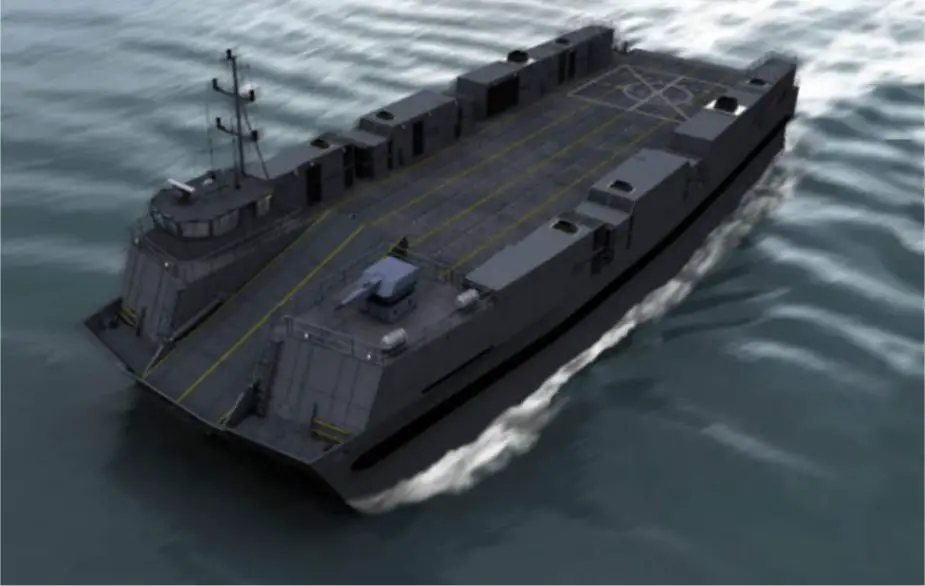Breaking news
Textron Systems unveils new solution SECAT for Expeditionary Warfare Logistics.
According to a press release published by Textron on February 2, 2022, the firm Textron unveiled a new solution for Expeditionary Warfare Logistics, called SECAT.
Follow Navy Recognition on Google News at this link
 Artist rendering of future Surface Effect Cargo Amphibious Transport or SECAT (Picture source: Textron Systems)
Artist rendering of future Surface Effect Cargo Amphibious Transport or SECAT (Picture source: Textron Systems)
As focus shifts from land-based competitions to large sea-based operations, there is an increased capability requirement for executing expeditionary logistics at sea and ashore.
Textron Systems believes that Surface Effect Ship (SES) technology can be utilized to provide specialized performance capabilities that traditional monohulls can’t when it comes to logistical support operations.
The company introduced a new, innovative design, called the Surface Effect Cargo Amphibious Transport (SECAT). This platform, based on SES technology, can deliver the advanced logistic capabilities required for Expeditionary Advanced Base Operations (EABO) & Distributed Maritime Operations (DMO).
Designed as a survivable, low-profile, high-speed connector, SECAT can carry 500 tons of cargo at 50 knots for 500 nautical miles in high sea states.
This innovative design enables performance capabilities such as survivability, at sea rolling stock cargo transfer, “feet dry” cargo offload/load ashore, high speed shallow and deepwater operations, and the versatility to carry a wide range of cargos- all of which could greatly enhance the U.S Navy and the U.S. Marine Corps’ ability to successfully execute EABO and DMO.
As a surface craft, the SECAT concept has an aluminum catamaran hull with a flexible bow and stern seals to contain an air cushion between the ridge side hulls.
This design allows for reduced resistance for high-speed maneuvers and is inherently less susceptible to underwater shockwaves, sea mines, submarine targeting, and torpedoes, increasing overall survivability for the craft.
Textron Systems has extensive experience within the marine specialty craft space. With the CUSV® system, the Common Unmanned Surface Vehicle and the Ship-to-Shore Connector.
The Fleet-class unmanned surface vessel, also called the Common Unmanned Surface Vessel (CUSV) and later the Mine Countermeasures Unmanned Surface Vehicle (MCM USV), is an unmanned surface vessel designed for the United States Navy to be deployed from Freedom and Independence-class littoral combat ships.


























